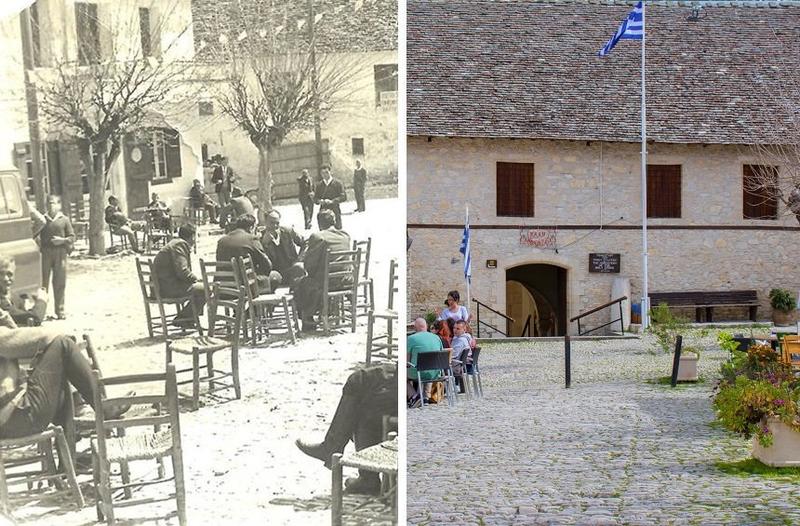
This square is one of the most characteristic landmarks of the Cyprus countryside, and it is considered to be the largest paved square, with an area of 3000 square meters. Its size, as well as its historical value and its central role in the community, are the main reasons that the square in the center of Omodos continues to be a popular destination.
The square was built in 1910, in front of the famous monastery of the Holy Cross, thus creating a gathering place for celebrations. The coffee shops created around the paved square, aimed at hosting locals and visitors of the monastery, helped establish the square as a daily visiting spot.
As the entrance of the monastery faces the square, the celebrations of 14th September as well as the Easter service, make it the center of attention and a reference point for the identity of the village.

The square at the beginning of the 1960s.
The paved stone of the square had been covered by asphalt in 1968 and remained as such for 20 years until the decision came about to restore the square’s traditional character. The paved stone resurfaced once more and so, a century later, this historical spot in the village returned to its original, picturesque image.
The square is the center of the village daily life, but it is particularly celebrated during religious festivals. Apart from the large bonfire that lights up on Easter, there is also a special ritual on Easter Tuesday, when the Holy Cross is traditionally carried out of the monastery on the priest’s shoulders and carried around the village.
Source: 'Omodos: History and Culture', Cyprus, 2012
* NOTE: The tributes of the Project "History of Limassol" present information that has emerged from historical research thus far. Any new data is embedded into the tributes, once it has been confirmed.